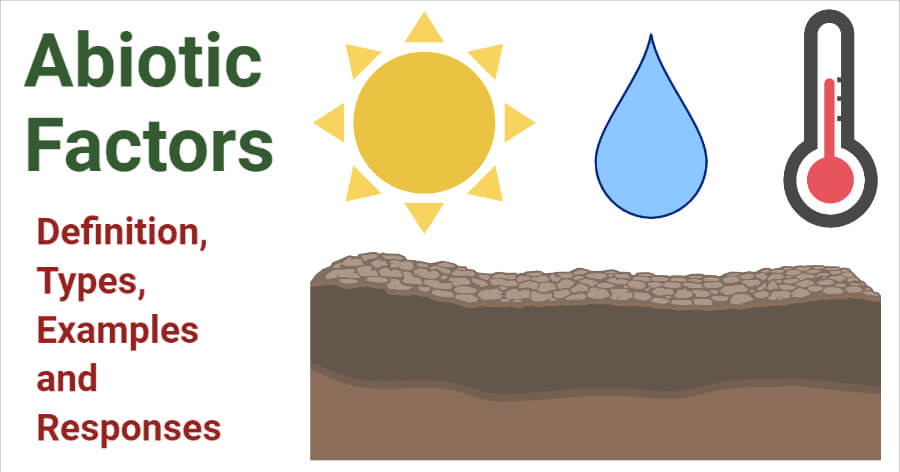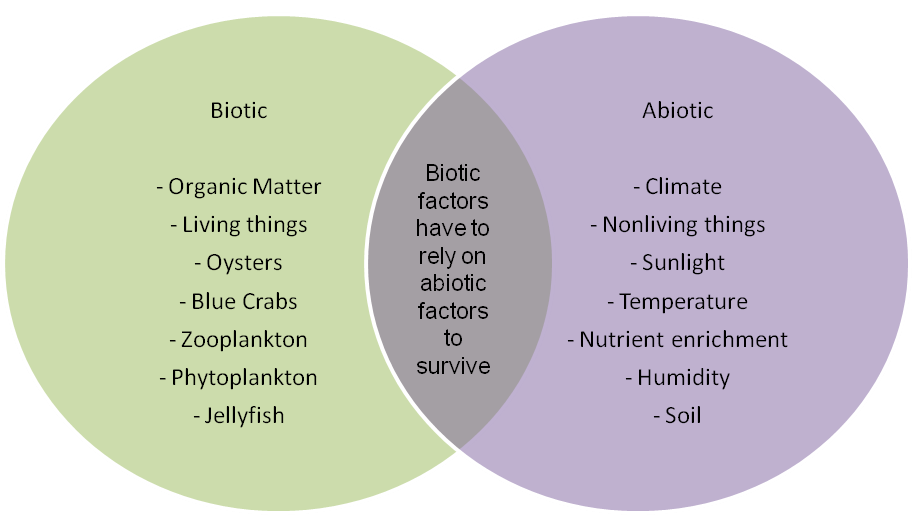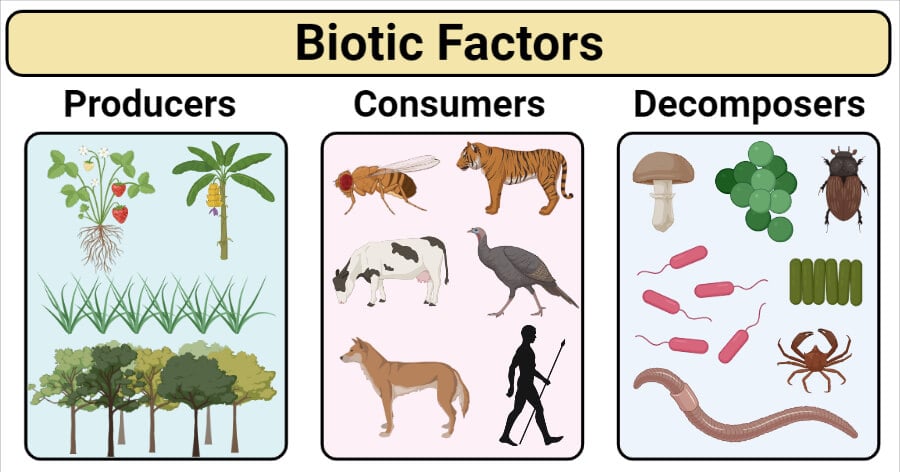Topic ecosystem abiotic: Explore the pivotal role of abiotic factors in ecosystems, where non-living elements like water, sunlight, and soil fundamentally shape the diversity and health of our natural world.
Table of Content
- What are examples of abiotic factors in an ecosystem?
- Understanding Abiotic Factors in Ecosystems
- Types of Abiotic Factors and Their Roles
- Abiotic Factors in Different Ecosystems
- Impact of Abiotic Factors on Biodiversity
- Climate Change and Abiotic Factors
- Monitoring and Managing Abiotic Components
- YOUTUBE: Abiotic Factors in Ecosystems: Water
- Case Studies: Ecosystems and Their Abiotic Elements
- Future Directions in Abiotic Research
What are examples of abiotic factors in an ecosystem?
Abiotic factors are non-living components that shape the environment of an ecosystem. These factors play a crucial role in determining the organisms that can survive and thrive in a particular ecosystem. Here are some examples of abiotic factors in an ecosystem:
- Temperature: The temperature of an environment can have a significant impact on the types of organisms that can live there. Different organisms have different temperature tolerances, and extreme temperatures can limit the diversity of species.
- Light: Light availability and intensity are critical for photosynthesis, which is the process by which plants and other autotrophic organisms convert sunlight into energy. This factor can affect the distribution of plants and the organisms that depend on them for food and shelter.
- Water: The availability and quality of water in an ecosystem are vital for the survival of organisms. Some organisms require specific moisture conditions, while others are adapted to thrive in arid environments.
- Soil composition: The composition of the soil, including its texture, pH, nutrient content, and organic matter, can influence the types of plants that can grow and the organisms that can live in the ecosystem. Different soil types can support different vegetation and impact the food chain.
- Air composition: The composition of gases in the air can affect the respiration and metabolism of organisms. Oxygen and carbon dioxide levels, as well as the presence of pollutants, can influence the survival and distribution of species.
- Topography: The physical features of the land, such as elevation, slope, and terrain, can impact factors like drainage, temperature, and exposure to sunlight. These factors contribute to the unique characteristics of different ecosystems.
- Geology: Geological features like rocks, minerals, and the presence of specific formations can influence the availability of nutrients and affect the types of plants and animals that can inhabit an ecosystem.
These are just a few examples of abiotic factors in an ecosystem. It\'s important to note that these factors are often interconnected and can interact with each other, shaping the overall dynamics of the ecosystem.
READ MORE:
Understanding Abiotic Factors in Ecosystems
Abiotic factors are the non-living components that play a crucial role in the environment, influencing the layout, behavior, and survival of organisms. These elements are foundational to ecosystem functionality, affecting everything from climate to soil fertility. Understanding these factors is essential for comprehending how ecosystems operate and sustain life.
- Temperature: Governs the types of organisms that can survive in an environment.
- Water: Essential for life, its availability shapes ecosystems around the globe.
- Light: Solar energy drives photosynthesis, the basis of most food webs.
- Soil and Rock: Determine the physical structure and chemical composition affecting plant growth.
- Atmospheric Gases: Critical for respiration and photosynthesis, influencing climate and weather patterns.
These factors interconnect to form the abiotic framework of ecosystems, guiding the interactions between living organisms and their physical world. By studying abiotic factors, scientists can predict changes in biodiversity, ecosystem health, and the effects of human impact on natural habitats.

Types of Abiotic Factors and Their Roles
Abiotic factors are varied and numerous, each playing a specific role in shaping ecosystems. These non-living elements are critical in determining the viability and structure of habitats. Understanding their types and functions is key to appreciating the complexity and balance of natural environments.
- Climate: Encompasses temperature, humidity, atmospheric pressure, and wind, influencing ecosystem types and species distributions.
- Water: Its chemical properties, availability, and movement through precipitation, groundwater, and bodies of water dictate the life forms an area can support.
- Light: The intensity, duration, and wavelength of light affect photosynthesis rates and thus the primary productivity of ecosystems.
- Soil: Soil composition, pH, and texture impact plant growth, which in turn supports various animal species.
- Minerals and Nutrients: Essential for plant growth, the availability of nutrients influences species composition and ecosystem productivity.
- Topography: The physical features of the landscape, such as elevation, slope, and aspect, affect microclimates and water drainage patterns.
These abiotic factors interact in complex ways, contributing to the unique characteristics of each ecosystem. By studying these elements, we gain insights into the functioning and resilience of habitats across the globe.
Abiotic Factors in Different Ecosystems
The influence of abiotic factors varies significantly across different ecosystems, shaping the biodiversity and structure of each environment uniquely. From the frozen tundras to the arid deserts, these non-living elements dictate the conditions for life in every habitat on Earth.
- Tropical Rainforests: Characterized by high rainfall, consistent warm temperatures, and high humidity, promoting diverse plant and animal life.
- Deserts: Defined by low precipitation, extreme temperature variations between day and night, and sandy soil, supporting specialized flora and fauna adapted to aridity.
- Tundras: Feature cold temperatures, permafrost, and a short growing season, with vegetation and wildlife adapted to cold climates.
- Grasslands: Have moderate rainfall, fertile soils, and seasonal droughts, favoring grasses and large herbivores.
- Aquatic Ecosystems: Vary in salinity, depth, temperature, and water flow, influencing marine and freshwater biodiversity.
- Mountains: Exhibit a range of climates and temperatures based on altitude, affecting species distribution and vegetation types.
Each of these ecosystems is a testament to how abiotic factors, such as climate, soil type, and water availability, play a foundational role in crafting the Earth"s diverse habitats.

Impact of Abiotic Factors on Biodiversity
The diversity of life forms within a given ecosystem, or biodiversity, is significantly influenced by abiotic factors. These non-living components determine not only the presence of species but also the complexity of interactions within ecosystems. Understanding their impact is crucial for conservation and sustainable management practices.
- Climate: Acts as a primary driver for biodiversity by determining the types of organisms that can thrive in a particular area.
- Soil Quality: Influences plant species diversity, which in turn supports a variety of animal species through food webs.
- Water Availability: Shapes ecosystems by enabling life in aquatic habitats and affecting terrestrial species distribution.
- Light Intensity: Affects photosynthetic activity, thereby influencing plant growth patterns and the ecosystems they support.
- Altitude: Creates varying environmental conditions on mountains, leading to diverse habitats and species adapted to specific altitudes.
These abiotic factors interact in complex ways, fostering rich biodiversity by creating niches for different life forms. Changes in these factors, whether natural or anthropogenic, can have profound effects on ecosystem health and biodiversity. Therefore, understanding and monitoring these elements is essential for protecting and enhancing natural habitats.
Climate Change and Abiotic Factors
Climate change represents a significant challenge to ecosystems worldwide, altering abiotic factors in ways that can have profound impacts on biodiversity and ecosystem services. Understanding the relationship between climate change and these non-living elements is critical for predicting and mitigating its effects on natural and human-modified landscapes.
- Temperature Increases: Lead to shifts in habitats and the potential for species migration or extinction in areas where temperature rises beyond survival thresholds.
- Altered Precipitation Patterns: Affect water availability, influencing plant growth, water sources for animals, and overall ecosystem productivity.
- Sea Level Rise: Impacts coastal ecosystems through changes in salinity and habitat inundation, threatening biodiversity and human settlements alike.
- Increased Carbon Dioxide: Affects plant growth rates and water usage, potentially altering food webs and carbon sequestration in forests and other ecosystems.
- Extreme Weather Events: Increase in frequency and intensity, disrupting ecosystems, damaging habitats, and affecting species survival and distribution.
These changes highlight the need for comprehensive strategies to adapt to and mitigate climate change impacts on abiotic factors, ensuring the resilience and sustainability of ecosystems for future generations.

Monitoring and Managing Abiotic Components
Effective monitoring and management of abiotic components are vital for the conservation of ecosystems and the enhancement of biodiversity. With changing environmental conditions and human impact, it is crucial to understand and mitigate adverse effects on these non-living factors.
- Environmental Monitoring: Regular collection of data on temperature, precipitation, soil quality, and other abiotic factors to assess changes over time.
- Water Resource Management: Ensuring sustainable use and quality of water sources to support both human needs and ecosystem health.
- Soil Conservation Practices: Implementing erosion control, organic farming, and reforestation to maintain soil fertility and prevent degradation.
- Climate Change Mitigation: Reducing greenhouse gas emissions and enhancing carbon sinks to stabilize global temperatures and protect ecosystems.
- Restoration Projects: Reestablishing natural habitats and processes to recover ecosystems affected by human activities or natural disasters.
By integrating these strategies, we can safeguard abiotic components, thereby supporting resilient and thriving ecosystems. This approach requires collaboration across disciplines and sectors, emphasizing the importance of science-based policy and community engagement.
Abiotic Factors in Ecosystems: Water
Dive into the beautiful world of water in this mesmerizing video! From sparkling ocean waves to tranquil lake reflections, witness the magic and importance of water in our lives. Don\'t miss out - click play and let yourself be amazed!
What is an Ecosystem? Populations, Communities, Abiotic & Biotic Factors
Join us on a fascinating journey as we unravel the story of populations. Discover how human cultures have evolved and interacted throughout history. From bustling cities to remote tribes, this captivating video will open your eyes to the diverse tapestry of our global community. Watch now and broaden your horizons!
Case Studies: Ecosystems and Their Abiotic Elements
Exploring specific case studies helps illustrate the profound impact of abiotic factors on ecosystems. These real-world examples demonstrate how non-living elements shape biodiversity, ecosystem functions, and the challenges and opportunities in environmental management.
- The Great Barrier Reef: Examines the effects of water temperature, salinity, and ocean acidification on coral bleaching and reef ecosystems.
- The Amazon Rainforest: Focuses on how precipitation patterns, temperature, and soil types influence the world"s largest tropical rainforest.
- The Sahara Desert: Highlights the role of temperature, water scarcity, and wind in shaping desert ecosystems and life adaptations.
- The Arctic Tundra: Investigates the impact of permafrost, low temperatures, and minimal precipitation on species diversity and carbon sequestration.
- The Rocky Mountains: Analyzes how altitude affects climate, vegetation zones, and animal habitats across mountainous regions.
These case studies underscore the importance of understanding abiotic factors in ecosystem management and conservation efforts. They provide valuable lessons on the interconnectedness of life and the non-living environment, guiding future research and policy decisions.

READ MORE:
Future Directions in Abiotic Research
The future of abiotic research is geared towards understanding the complex interplay between non-living elements and living organisms in a rapidly changing world. Advancements in technology and interdisciplinary approaches are paving the way for innovative studies that promise to enhance our understanding and management of ecosystems.
- Integrated Climate Models: Developing more sophisticated models to predict the impacts of climate change on abiotic factors and, consequently, on biodiversity.
- Nanotechnology in Soil and Water Conservation: Utilizing nanotechnology for more efficient soil and water conservation methods, improving agricultural productivity and ecosystem health.
- Remote Sensing for Environmental Monitoring: Expanding the use of satellite imagery and remote sensing technologies to track changes in abiotic factors over large areas and in real-time.
- Big Data and AI in Ecosystem Management: Leveraging big data analytics and artificial intelligence to predict environmental changes and inform conservation strategies.
- Interdisciplinary Research: Encouraging collaboration across disciplines such as ecology, geology, climatology, and urban planning to address complex environmental challenges.
These future directions in abiotic research hold the promise of providing deeper insights into the functioning of ecosystems and informing more effective conservation and restoration efforts. The goal is to foster resilient ecosystems that can withstand environmental changes and continue to support biodiversity.
Abiotic factors are the unsung heroes of ecosystems, shaping the tapestry of life on Earth. Embracing their study unveils the intricate balance of nature, guiding our efforts to preserve the planet"s breathtaking diversity.






